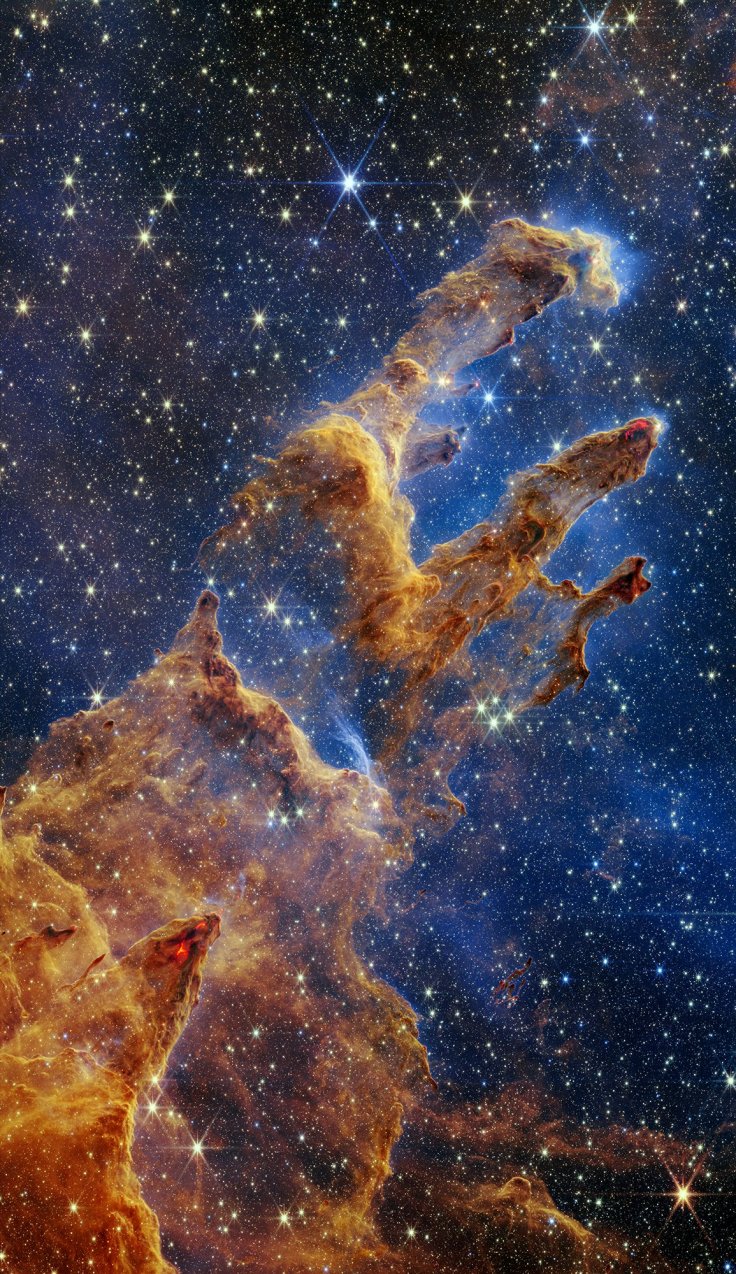A detailed picture of the Pillars of Creation was captured by a giant telescope of NASA. The James Webb Space Telescope captured the iconic Pillars of Creation. The lush, highly detailed landscape shows new stars forming within dense clouds of gas and dust.
The three-dimensional pillars look like majestic rock formations but are far more permeable. These columns are made up of cool interstellar gas and dust that appear – at times – semi-transparent in near-infrared light, according to NASA.

Pillars of Creation To Help Researchers Revamp Their Models of Star Formation
NASA has pointed out that the Pillars of Creation, which were first made famous when imaged by NASA's Hubble Space Telescope in 1995, will help researchers revamp their models of star formation by identifying far more precise counts of newly formed stars, along with the quantities of gas and dust in the region.
Wavy Lines Seen in These Pictures Are Ejections From Stars
Over time, they will begin to build a clearer understanding of how stars form and burst out of these dusty clouds over millions of years.
According to the space agency, newly formed stars are the scene-stealers in this image from Webb's Near-Infrared Camera (NIRCam). "These are the bright red orbs that typically have diffraction spikes and lie outside one of the dusty pillars. When knots with sufficient mass form within the pillars of gas and dust, they begin to collapse under their own gravity, slowly heat up, and eventually form new stars."
The wavy lines seen in these pictures are ejections from stars that are still forming within the gas and dust. NASA stressed that the young stars periodically shoot out supersonic jets that collide with clouds of material, like these thick pillars.
According to NASA.gov, this sometimes also results in bow shocks, which can form wavy patterns like a boat does as it moves through the water. The crimson glow comes from the energetic hydrogen molecules that result from jets and shocks. This is evident in the second and third pillars from the top – the NIRCam image is practically pulsing with their activity. These young stars are estimated to be only a few hundred thousand years old.









